Beyond the Rías Baixas, we explored other areas of Galicia on our wondrous 10-day trip. For example, we spent a day in the place (and perhaps the only place) that everyone probably knows in Galicia: Santiago de Compostela. If the city doesn’t ring a bell, then it might be because you don’t realise that it’s the endpoint of the Camino de Santiago, one of the world’s most famous pilgrimage trails (and definitely the most famous in Europe). Beyond the Camino, the city itself also has a long, weathered history.
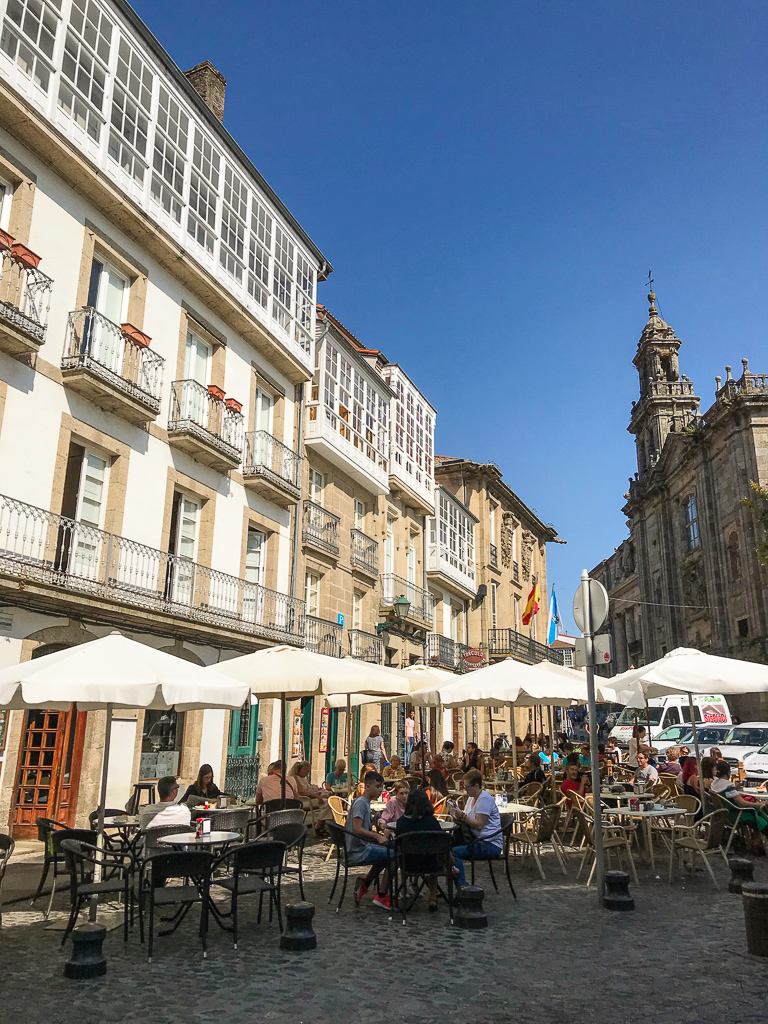
Exploring the Old Town
Santiago has an extensive religious history due to the discovery of the tomb of the Apostle Santiago the Elder sometime around 814 AD. The news of this discovery spread throughout Europe which prompted the first pilgrims to make their way to Santiago. Eventually, such a path turned into the Camino (more on that later).
The Old Town of Santiago is scattered with Romanesque, Gothic, and Baroque buildings, making it a very charming area to explore. As you can also imagine due to the religious history, there are also a plethora of churches and monasteries. It’s no wonder that in 1985 the Old Town was designated a UNESCO World Heritage Site.
 We started by wandering around the various streets, running into several beautiful monuments. We then ran into Mercado de Abastos, a lovely market with some 300 stalls selling fresh produce. Opening in 1873, the market mostly sells Galician produce, so you can try plenty of local products like padron peppers, octopus, salted cod, and empanadas. It’s a beautiful complex with plenty of snack stalls as well.
We started by wandering around the various streets, running into several beautiful monuments. We then ran into Mercado de Abastos, a lovely market with some 300 stalls selling fresh produce. Opening in 1873, the market mostly sells Galician produce, so you can try plenty of local products like padron peppers, octopus, salted cod, and empanadas. It’s a beautiful complex with plenty of snack stalls as well.
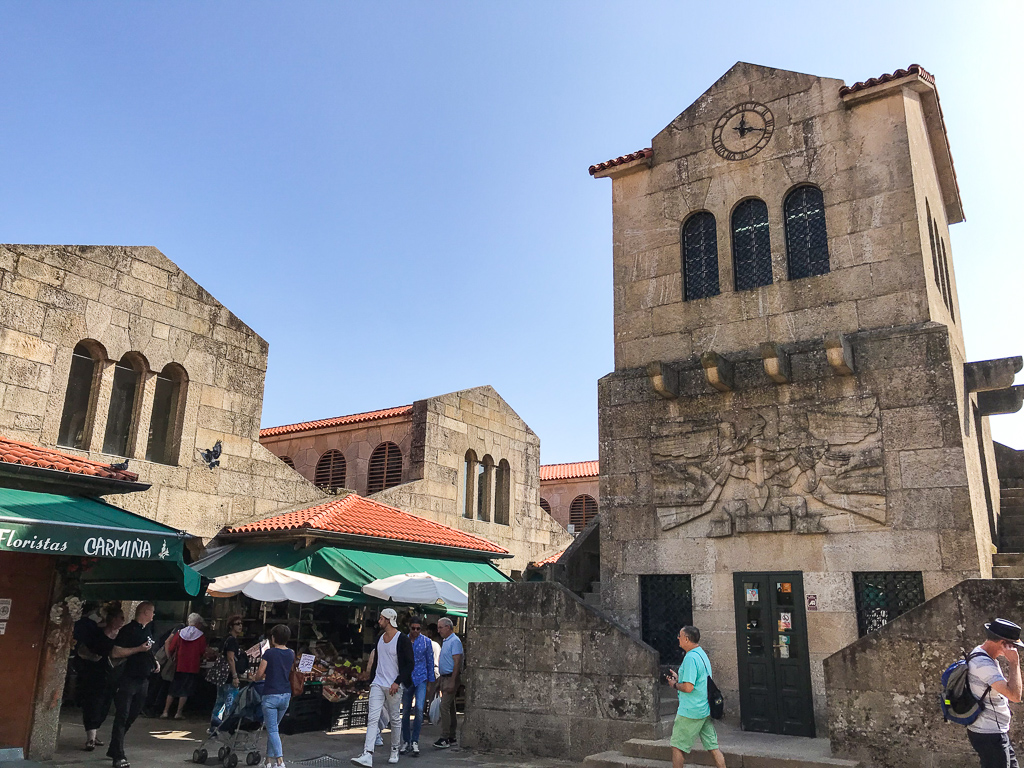
 One regional staple you have to try in Galicia is Tarta de Santiago. It’s a dense, lightly sweetened almond cake, typically decorated with powdered sugar with the outline of the Santiago cross. Dessert in Galicia is mostly based on almonds because apparently, pilgrims on the Camino brought nuts with them to snack on. Regardless if that’s true, there certainly are a lot of almond desserts to try like caprichos (small biscuits made from toasted almonds, eggs, and sugar) and pedras (“stones”, chocolate-covered almonds).
One regional staple you have to try in Galicia is Tarta de Santiago. It’s a dense, lightly sweetened almond cake, typically decorated with powdered sugar with the outline of the Santiago cross. Dessert in Galicia is mostly based on almonds because apparently, pilgrims on the Camino brought nuts with them to snack on. Regardless if that’s true, there certainly are a lot of almond desserts to try like caprichos (small biscuits made from toasted almonds, eggs, and sugar) and pedras (“stones”, chocolate-covered almonds).

The Cathedral
The main attraction in the city is of course the cathedral. The Catedral de Santiago de Compostela is the reputed burial place of Saint James the Great, an apostle of Jesus Christ. It is for this reason that the cathedral marks the end of the Camino de Santiago, also known as the Way of St. James. It extends from different countries of Europe and even North Africa to the Cathedral.
One of the most important symbols of the Camino is the scallop shell. It is commonly found in Galicia (there is a long coastline after all), and due to several myths connecting the shell to the Camino, it has come to represent pilgrimage. The shell is seen on posts and signs along the Camino in order to guide pilgrims along the way. It is also worn by travelers, or hung from travelers’ walking sticks. While we did not walk any part of the Camino on purpose, we did run into several markers as we explored many towns throughout Galicia.

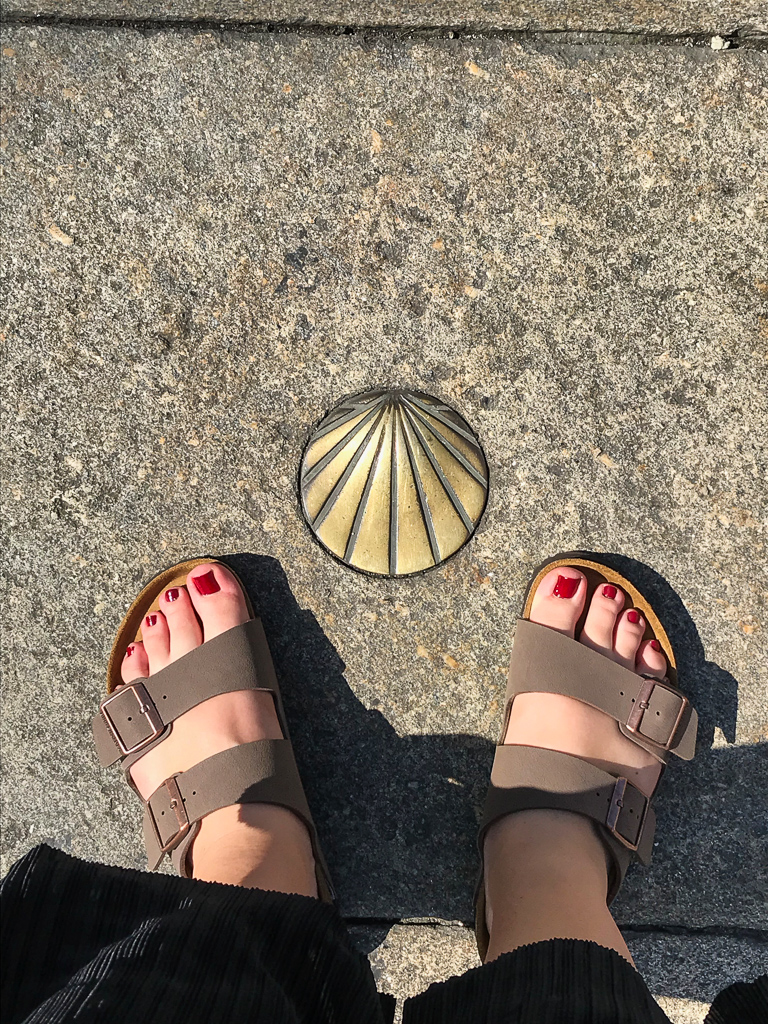 Now, onto the Cathedral itself. Legend has it that Saint James’ tomb was rediscovered in AD 814. To celebrate this miracle, the Bishop at the time informed the King who in turn ordered a chapel to be built on the site of the tomb. This was followed by the construction of two churches, one in D 829 and the other in AD 899. Unfortunately, the early church was set ablaze by Al-Mansur Ibn Abi Aamir, the army commander of the caliph of Córdoba.
Now, onto the Cathedral itself. Legend has it that Saint James’ tomb was rediscovered in AD 814. To celebrate this miracle, the Bishop at the time informed the King who in turn ordered a chapel to be built on the site of the tomb. This was followed by the construction of two churches, one in D 829 and the other in AD 899. Unfortunately, the early church was set ablaze by Al-Mansur Ibn Abi Aamir, the army commander of the caliph of Córdoba.
Construction of the present cathedral began in 1075. The cathedral was consecrated in 1211 in the presence of King Alfonso IX of Leon. Needless to say, this cathedral has been around a very long time and has been visited by thousands and thousands of travellers.
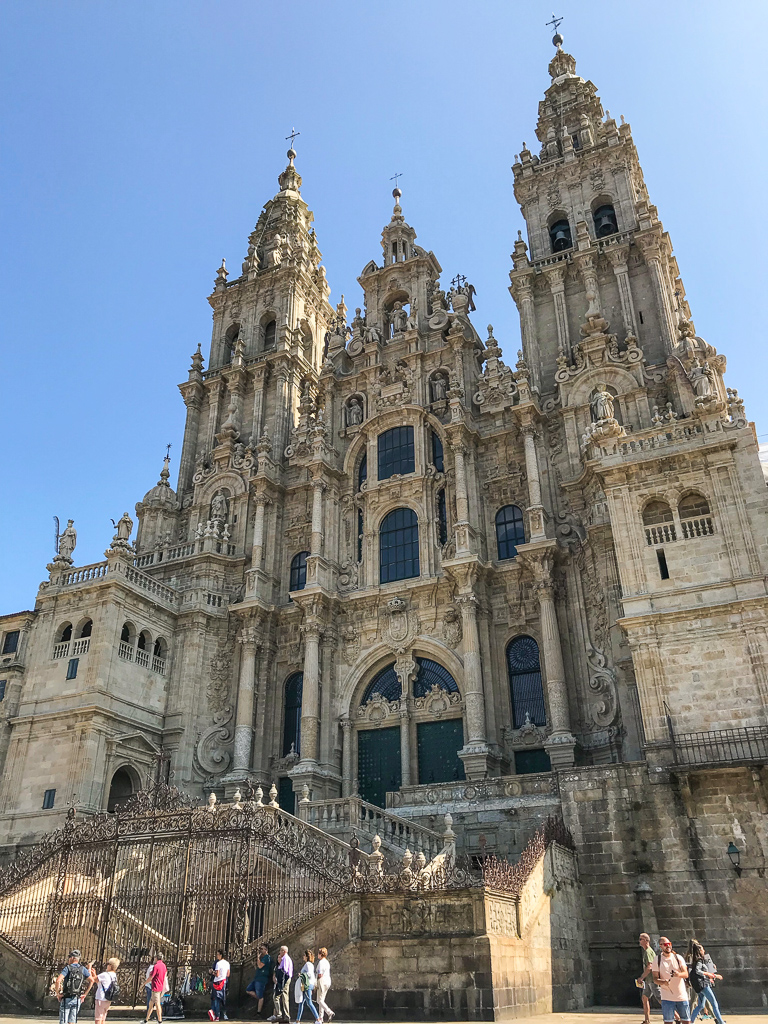 It is also one of the only three known churches in the world built over the tomb of an apostle of Jesus, the other two being St. Peter’s Basilica in Vatican City and St. Thomas Cathedral Basilica, Chennai in India.
It is also one of the only three known churches in the world built over the tomb of an apostle of Jesus, the other two being St. Peter’s Basilica in Vatican City and St. Thomas Cathedral Basilica, Chennai in India.

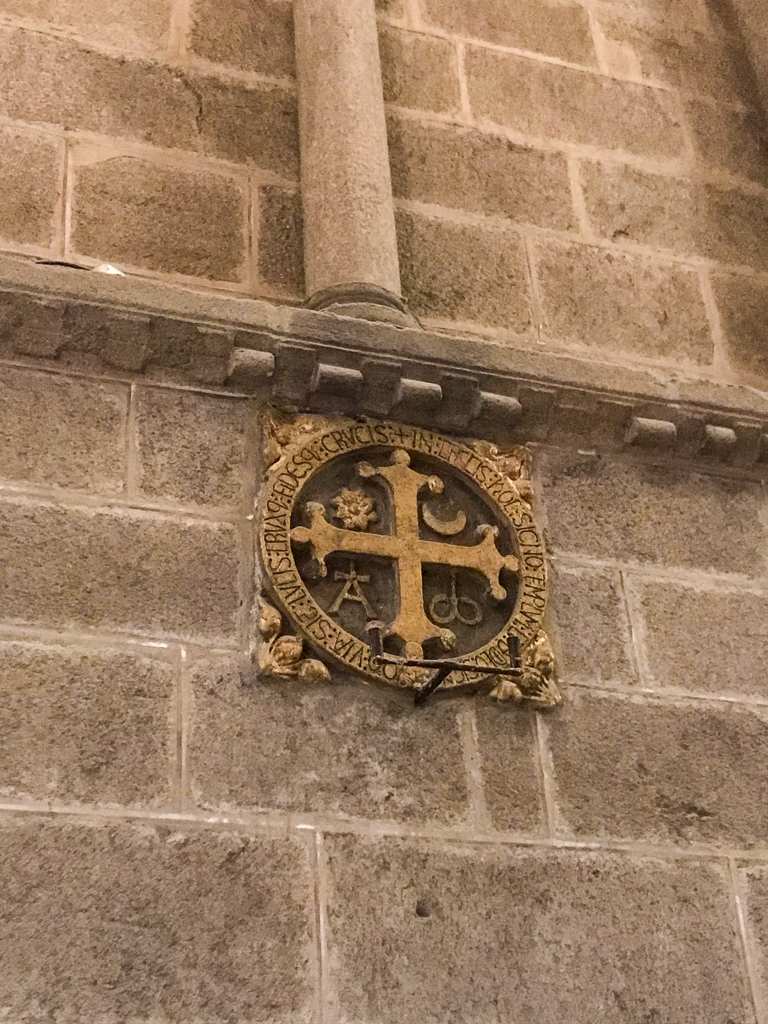
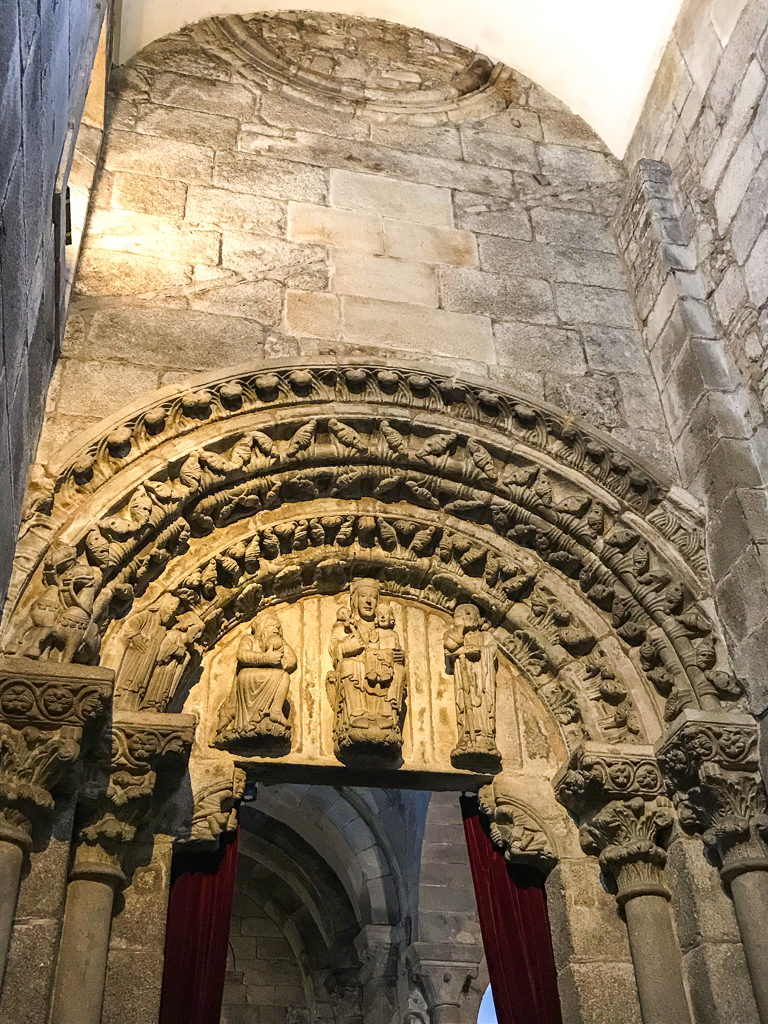
It’s also worth checking out the Cathedral’s cloister. Built during the 16th century, it’s one of the largest cloisters in Spain.

Lunch
After a full-on morning of exploring Santiago, it was time for lunch. We went to Casa de Xantar O Dezaseis. We started off with Mexilóns en escabeche de sidra (Mussels in cider brine) and padron peppers. Just an hour away from Santiago is the town of Padron, where padron peppers come from. They’re eaten all over Spain, but it was particularly fun to enjoy it more locally.


For our mains, we enjoyed Polbo á grella (Octopus salad), Rodaballo ó azafrán (Turbot with saffron), and Rape á cazola con berberechos (Monkfish with cockles). As I’ve mentioned in my other posts on Galicia, the seafood and fish standard here is incredibly high. I’ve never had such consistently high qualify and delicious fish than I’ve had in Galicia.


We also had the most spectacular desserts! Victor and I split each, one being Flan de queixo (cheese flan) and Semifrío de queixo con marmelo (Cheese semifreddo with quince). Needless to say, we were so incredibly stuffed but very happy. I highly recommend this gem of a restaurant.
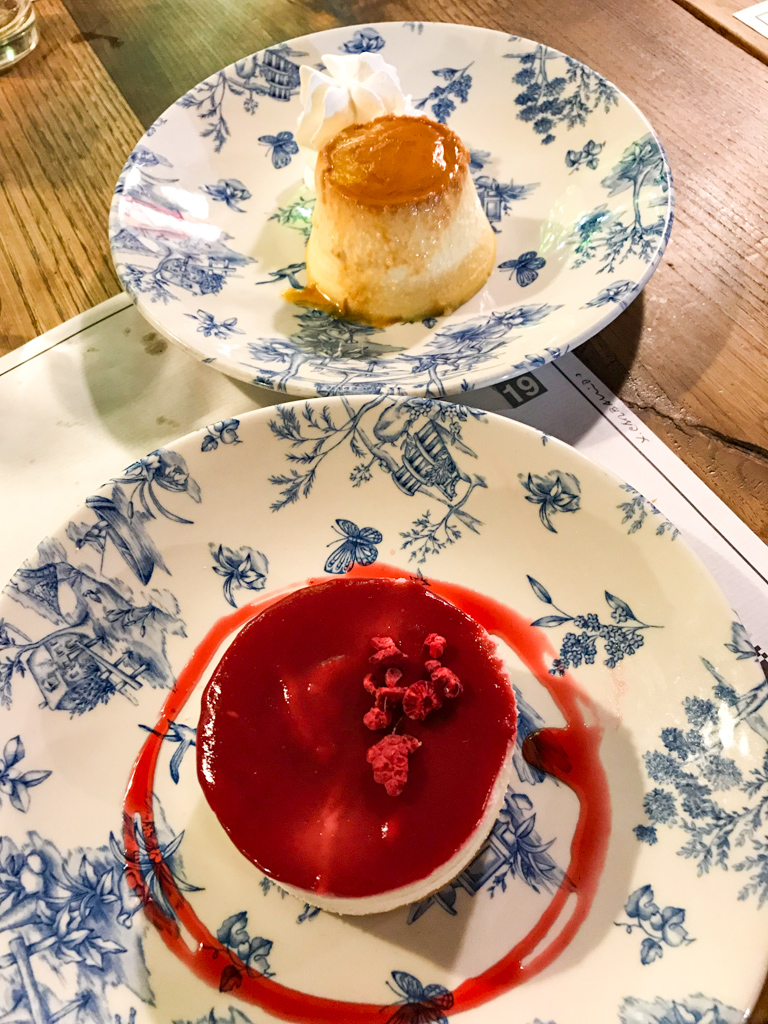
Carballeira de Santa Susana
And obviously, as there is the Old Town, there is also the New Town.
We left the center of the city to visit the University of Santiago de Compostela campus. It’s a lovely, serene area to explore and it has many green spaces worth wandering around. One such space is Parque da Alameda, one of the city’s oldest parks. It also has some of the best views in the city of the old town center.
 The park is actually made up of three areas, or gardens. The Paseo da Alameda features ponds, fountains, and other tranquil pieces. It’s a very peaceful garden, and well-known as such.
The park is actually made up of three areas, or gardens. The Paseo da Alameda features ponds, fountains, and other tranquil pieces. It’s a very peaceful garden, and well-known as such.
Another area is the Oak Grove of Santa Susana. In the twelfth century, the archbishop at the time ordered the construction of a church to house the relics of Saint Susana. The church has been remodeled since, in both the seventeenth and eighteenth centuries. However, the name is due to the fact that the church is surrounded by several 200-year old oak trees. The third area is the Paseo da Ferradura which surrounds the oak grove. As you go up the paseo, there is where you can catch some of those spectacular views.


The City of Culture
Before heading back to the apartment, we made one last stop at the City of Culture.

 Galicia hosted an international design competition back in 1999. The challenge? To design a modern complex dedicated to cultural activities. The winner was Peter Eisenman, an American architect known for his high modernism designs. He also designed the Memorial to the Murdered Jews of Europe (also known as the Holocaust Memorial) in Berlin.
Galicia hosted an international design competition back in 1999. The challenge? To design a modern complex dedicated to cultural activities. The winner was Peter Eisenman, an American architect known for his high modernism designs. He also designed the Memorial to the Murdered Jews of Europe (also known as the Holocaust Memorial) in Berlin.
The complex is stunning and I thoroughly enjoyed roaming around, admiring the sleek, modern design.


 And so ended our wonderful day exploring Santiago. It’s a fantastic city full of rich history and good food.
And so ended our wonderful day exploring Santiago. It’s a fantastic city full of rich history and good food.
Up next is another day trip in Galicia, this time to the port city of A Coruña.


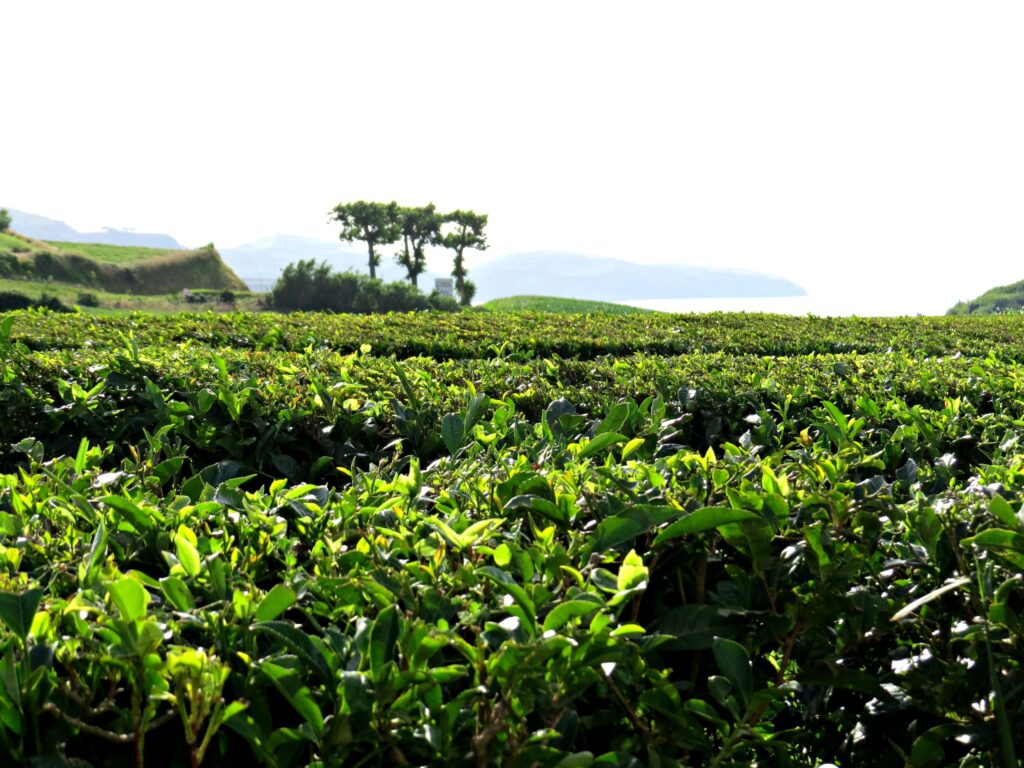
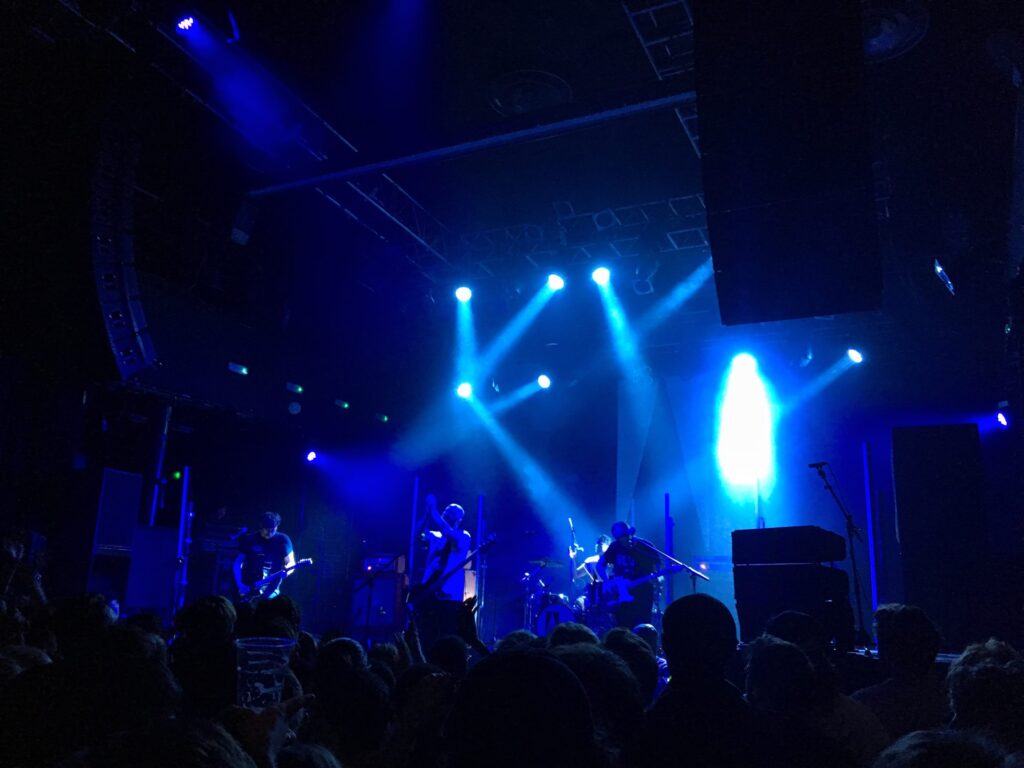
No Comments